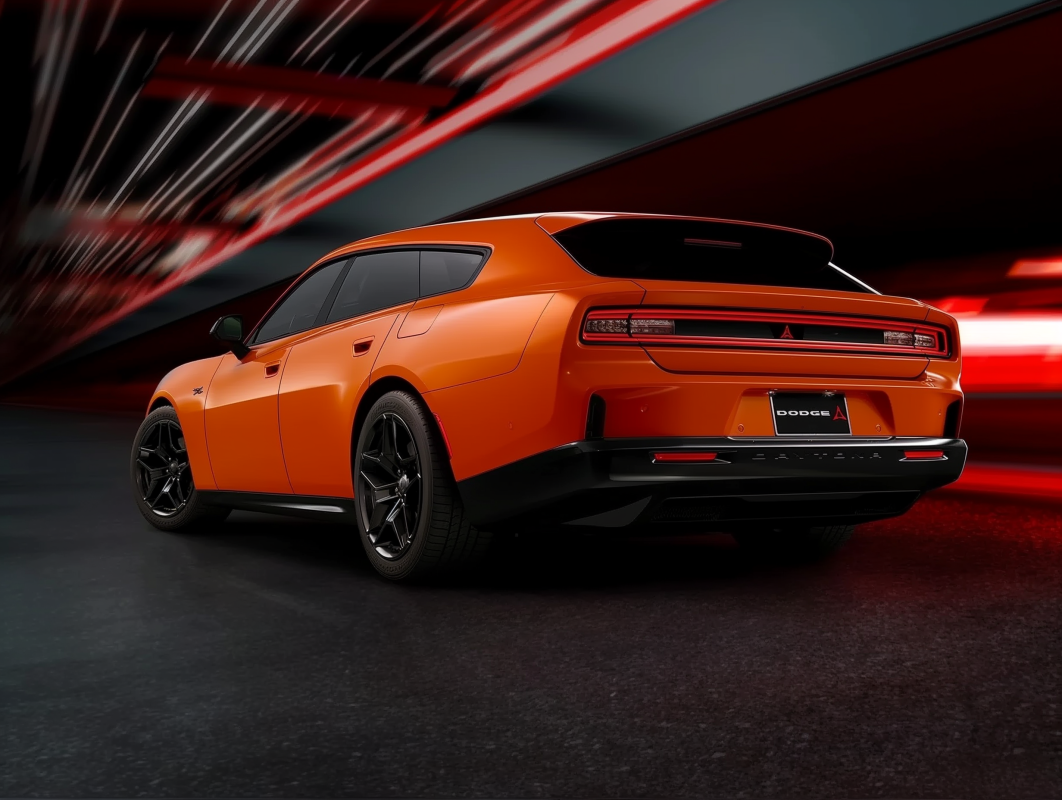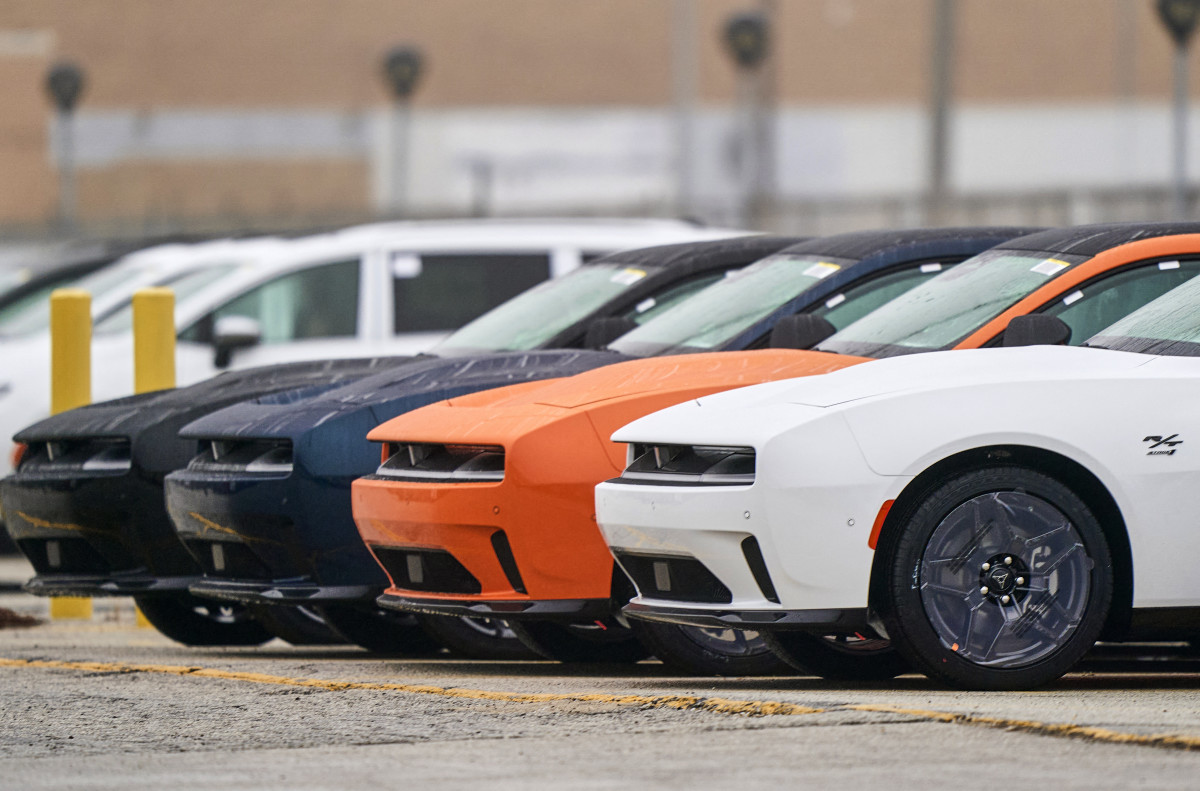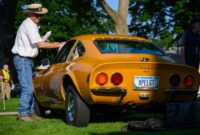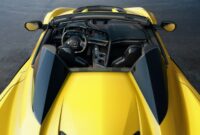High-performance station wagons have made an impressive comeback.
High-performance station wagons have been around for quite some time, even within the realm of American car manufacturing. Back in the 1960s, local manufacturers offered spirited wagon options like the Pontiac Tempest Safari Wagon and the Oldsmobile Vista Cruiser 442. These models combined robust, high-capacity V8 engines typically found in top-tier muscle cars with roomy station wagons capable of comfortably accommodating both your entire family and all their luggage without breaking a sweat. By the 1990s, certain European automakers had developed their take on sporty yet practical family vehicles; examples include the turbocharged inline-five powered Audi RS2 Avant and the powerfully equipped BMW E39 540i Touring featuring a strong V8 engine.
In the early 2010s, the global automotive industry hit its apex when it came to high-performance wagons, thanks to numerous models launched by both European and American manufacturers that solidified the legacy of these vehicles forever. During this period, Audi introduced the incredibly powerful C6 RS6 Avant—a full-sized family vehicle equipped with an all-wheel-drive system and driven by a bi-turbocharged engine delivering 572 horsepower via a massive 5.0-liter V10. To put that into perspective, this versatile wagon actually boasted 47 additional horsepower compared to Audi’s own contemporary supercar, the R8, featuring the same type of powerplant.
Around the same timeframe, BMW debuted their inaugural M5 Touring model. This variant featured a naturally aspirated version of the familiar 5.0-liter V10 rather than using forced induction like its rival from Audi. Although lacking turbos and all-wheel drive, it remained firmly focused on providing exceptional driving dynamics suitable for five passengers yet still offering ample room inside for transporting pets or luggage during road trips.

Regrettably, over here, these two super wagons equipped with V10 engines weren’t available domestically. Instead, what we received were three powerful V8-driven muscle wagons that demonstrated wagons belonged just as much in contemporary driveways as they did in our grandmothers’. During this period, when Mercedes-Benz was marketing their 518-horsepower, 6.2-liter V8-equipped E63 AMG Estate overseas around the early 2010s, Cadillac introduced its own high-performance offering: the supercharged CTS-V Sport Wagon packing a robust 556 horsepower under its hood thanks to its 6.2-liter V8 engine. Interestingly, you could opt for a traditional six-speed manual gearbox too. This model captivated car enthusiasts globally, earning recognition even on Top Gear—a show previously skeptical about American-made performance vehicles.
While the CTS-V’s triumph marked significant progress for domestic automakers, it somewhat eclipsed another noteworthy contender—the Dodge Magnum—which has slipped out of many folks’ recollections despite being quite capable itself.
The Dodge Magnum provided classic muscle car thrills for contemporary times.
These days, the Magnum doesn’t get much attention, yet for those who still think about Dodge’s late-2000s estate car, their memories tend to be quite positive. Essentially acting as a Dodge Charger with distinctive styling and an extended roofline, the Magnum offered various engine options including both V6 and V8 configurations. However, the standout version was undoubtedly the Magnum SRT8 equipped with a powerful 6.1-liter Hemi V8. This model delivered 425 horsepower to the rear wheels, accelerated from zero to 60 miles per hour in merely 5.1 seconds, and completed a quarter-mile run in just 13.6 seconds right off the factory floor.
Even though the Magnum excelled both as a performance vehicle and an everyday commuter car, its four-door sedan equivalents—the Dodge Charger and Chrysler 300—significantly outpaced sales of the station wagon. This led to the discontinuation of the Magnum following the 2008 model year. Simply put, sedans were preferred; individuals seeking a powerful V8 muscle car avoided driving their vehicles in this body style to auto exhibitions since they felt it appeared too much like a typical family car rather than a serious contender for street racing events.

By 2025, the station wagon started making a comeback. It shed its image as merely a “grocery-getter” for grandparents and emerged as a symbol of functional performance. Why choose a conventional four-door sedan when you can enjoy additional storage space along with a distinctive look that stands out among the countless sedans and crossovers flooding American roads with monotony? According to recent reports from Car & Driver, this trend illustrates an interesting shift.
Halves of Current M5 Productions Consist of BMW M5 Touring Orders.
BMW’s unexpected triumph with the M5 Touring left them surprised, notes Fred Smith from Car & Driver, who mentions they originally intended “to produce vehicles in a 2:1 sedan-to-station-wagon proportion.” This model extends the legacy set by the successful M3 Touring, demonstrating how interest in high-performance wagons is growing over traditional sedans due to their comparable power combined with better practicality for everyday use. Despite not achieving sales expectations like Dodge anticipated during the late 2000s, this could be an opportune moment for the company to revisit and possibly revamp the concept of the Magnum.
By employing generative AI technology for text-to-image creation along with Adobe Photoshop using official Dodge press photos as references, we explore how a potential revival of the Dodge Magnum might appear, integrating contemporary Dodge Charger design features and style details. Please note these visuals are purely speculative and do not represent any genuine Stellantis or Dodge models.
The new Dodge Charger desperately needs help
As our very own
Elijah Nicholson-Messmer
recently reported,
Dodge’s EV gamble has fallen flat
, and “In the first quarter of 2025, Dodge sold more of the discontinued Chargers and Challengers than its new electric Charger Daytona model.” Consequently, the Stellantis-owned marque has been scrambling to redesign the Charger for internal combustion engines, thus
A Hemi V8 charger is apparently being developed.
It appears clear that potential customers interested in purchasing a classic two-door muscle car have little interest in electric powertrains, particularly when they replace the traditional V8 engine’s allure that initially drew people to the Charger. Maybe reviving the Dodge Magnum with an electrified version alongside options like Dodge’s latest Hurricane inline-six motors and thunderous Hemi V8 engines might be more appealing.

From the outset, a completely electric Dodge Magnum could use the Charger Daytona EV Scat Pack’s 100.5 kWh battery, delivering 670 horsepower and 627 lb-ft of torque, competing against the Chevrolet Blazer EV SS equipped with a 102 kWh battery generating 615 horsepower and 650 lb-ft of torque. For a more budget-friendly option, Dodge might opt to install the revitalized Magnum with its 550-horsepower twin-turbocharged 3.0-liter Hurricane inline-six engine. However, our imagination leans towards reviving an iconic version like the Magnum SRT8, powered by a supercharged 6.2-liter V8 capable of producing approximately 800 horsepower. This setup could potentially outperform rivals such as the BMW M5 Touring, the Audi RS6 Avant, and the Mercedes-AMG E53 Hybrid Estate when racing at the drag strip.

Final thoughts
Despite questions about the potential market success for a station-wagon version of the updated Dodge Charger Daytona, Dodge finds itself at a critical juncture requiring bold moves to stay pertinent. The company’s lineup now consists solely of three vehicles: the Charger, the Hornet, and the Durango. Even as recent additions like the Charger and Hornet bring freshness, the Durango continues to be Dodge’s top seller—despite being part of a generation launched back in 2010. Consequently, Dodge dealers face challenges when trying to move their latest offerings; they find themselves more easily shifting older models priced as new cars rather than contemporary ones from their inventory.
Dodge must focus on turning traditional appeal and charisma into items that cater to modern demands without breaking the bank. This strategy was key to the success of the older models like the Charger and Challenger. If Dodge fails to adopt this approach for its updated Charger lineup, the outlook for the company might be quite bleak.




